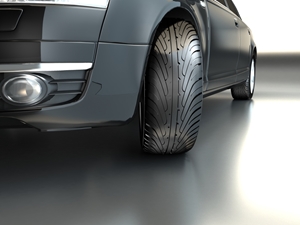 There is no doubt that the Australian automotive industry had a rough 2014. From difficult market conditions to lower consumer confidence, some insiders had written off the year even before its halfway mark.
There is no doubt that the Australian automotive industry had a rough 2014. From difficult market conditions to lower consumer confidence, some insiders had written off the year even before its halfway mark.
However, according to statistics released on January 6 by the Federal Chamber of Automotive Industries (FCAI), more than 1.1 million new vehicles were sold in 2014 – just the third time that this has occurred in Australia.
In fact, 1,113,224 new vehicles were bought by both consumers, businesses and governments, making 2014 one of the more positive years in recent times.
2014 top seller
Australia’s new vehicle market is one of the most competitive in the world. With more than 60 brands selling over 350 models, there is no shortage of choice for those willing to buy.
Last year, there were two vehicles vying for the top spot – the Toyota Corolla and the Mazda 3. At the end of November, just 679 sales separated the models and by the conclusion of 2014, the Corolla had held on to win by just 422 units. A total of 43,735 Toyota Corollas were sold across the country.
Rounding out the top five were, the Toyota Hilux (38,126 units), Hyundai i30 (31,505) and the Holden Commodore (30,203). In an interesting side note, the sixth place Ford Ranger’s sales grew 22.4 per cent over 2013 – an impressive rise considering how competitive this market is.
Toyota – top manufacturer
Thanks to the Corolla’s win in the individual category and a strong range of popular models, Toyota ran away to win the top manufacturers prize for 2014 by close to 100,000 units.
Despite a drop of 5.2 per cent on 2013, Toyota still sold more than 200,000 units across the country. This represents a 18.3 per cent share of the market – highlighting the strong presence of the Toyota brand in Australia.
Holden finished in second (106,000), closely followed by Mazda and Hyundai who both squeezed past the 100,000 mark.
Small cars dominate the market
The demand for SUVs and light commercial vehicles expanded in 2014.Three out of the top five sellers for 2014 were smaller vehicles.
FCAI Chief Executive Tony Weber explained this area will continue to grow into the future.
“The increase in SUV purchases is a reflection of the versatility these vehicles provide and the increasing range of these vehicles available in the market,” he said.
“SUVs and light commercial vehicles now account for almost 50 per cent of new car sales in Australia. Passenger car sales have dropped 6.1 per cent to hold 47.8 per cent of the market.”
NSW carrying the flag
While it was a strong year for car sales in Australia, when the statistics are broken down, just one state improved over 2013.
Sales in New South Wales improved 1.5 per cent with more than 356,000 new vehicles purchased in the state. Victoria (302,722 units) was the second highest result, but this was 1.5 per cent down on the previous year.
Tasmania saw the greatest decline (-9.5 per cent) and was followed by Western Australia (-8.1 per cent), Queensland (-4.1 per cent), the Northern Territory (-3.5 per cent), the ACT (-3.3 per cent) and South Australia (-1.2 per cent).
2015 prospects
With the Australian economy heading in the right direction, 2015 is shaping up to be another positive year for the local automotive market. This means it will be important that consumers shop around for the best deals, including CTP green slip and comprehensive insurance.
your opinion matters: